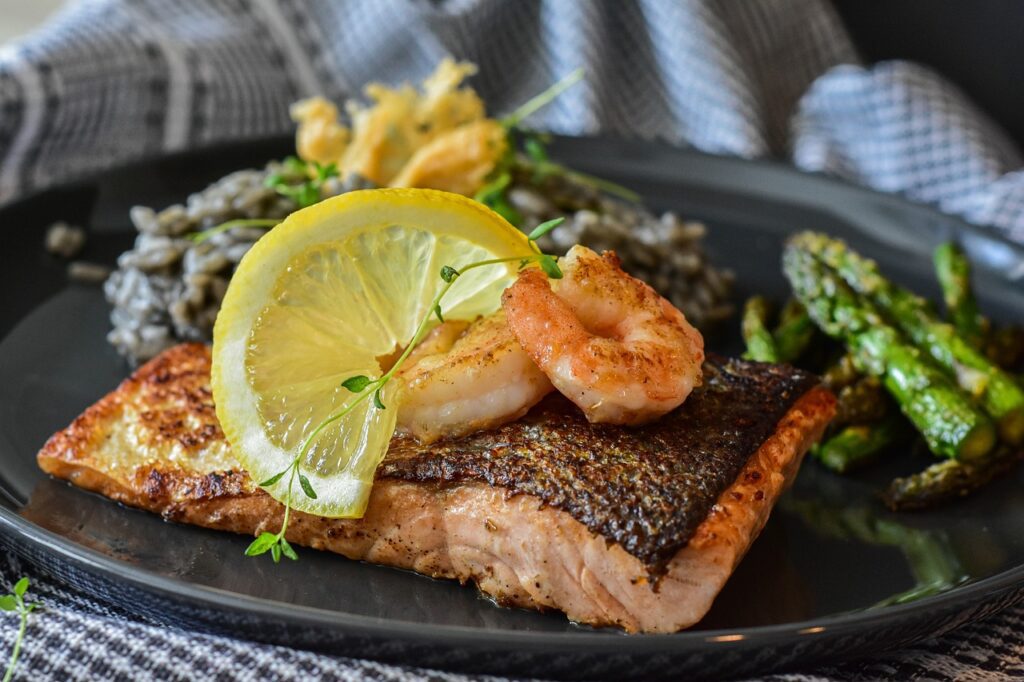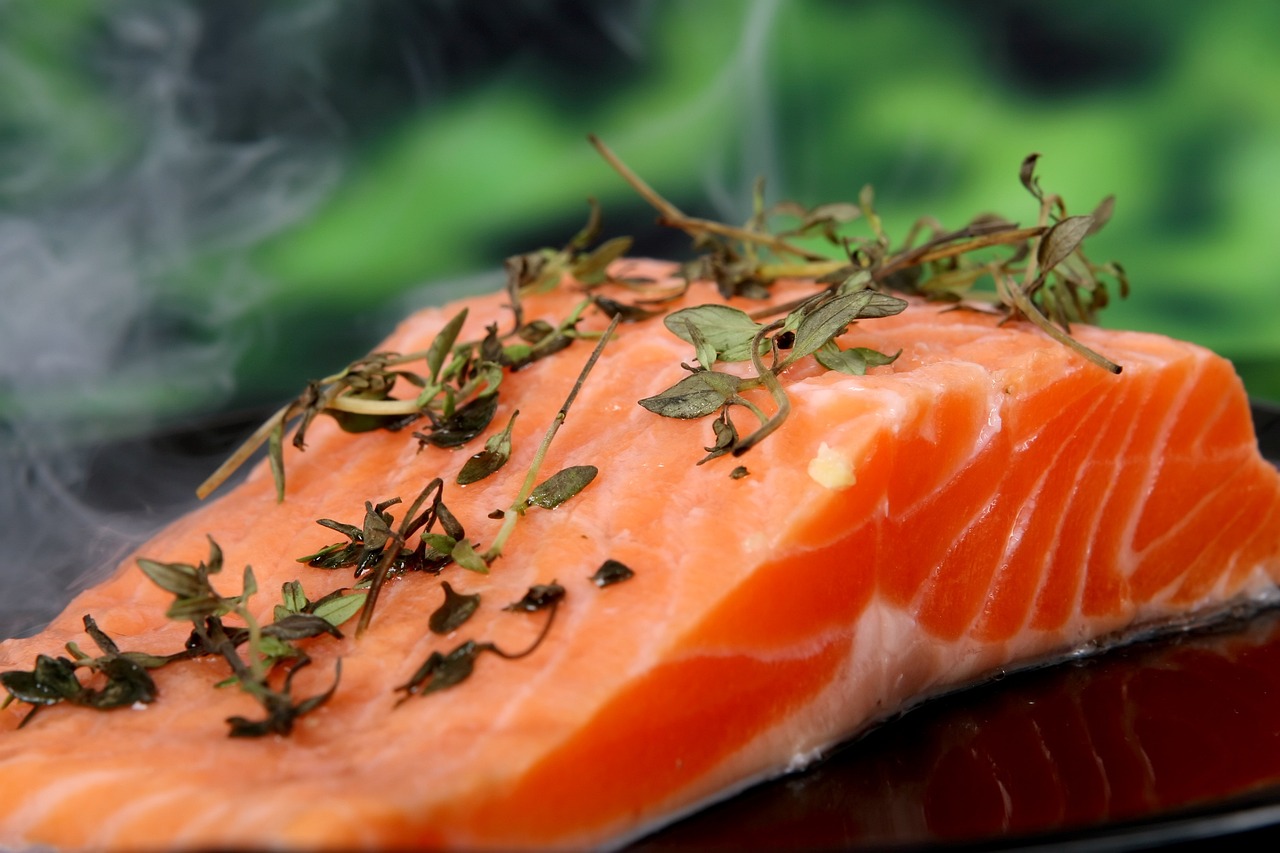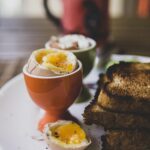Introduction to Salmon Cooking
Salmon is a delicious and nutritious fish that is packed with omega-3 fatty acids, high-quality protein, and essential vitamins and minerals. Cooking salmon can be a delightful culinary experience, and with the right techniques and ingredients, you can create a mouthwatering dish that will impress your family and friends. In this guide, we will explore various methods of cooking salmon, from grilling and baking to poaching and pan-searing. Each method offers unique flavors and textures, allowing you to experiment and find your favorite way to prepare this versatile fish.
Choosing the Right Salmon
Before diving into the cooking process, it is essential to select the right type and quality of salmon. Here are a few tips to help you choose the best salmon for your dish:
Freshness
Look for salmon fillets or steaks that have a vibrant, firm flesh with a mild aroma of the sea. Avoid fish that smells overly fishy or has discolored patches.
Wild vs. Farmed
Wild salmon tends to have a stronger flavor and a firmer texture due to its natural diet. Farmed salmon is more readily available and often has a milder taste. Both types can be used for cooking, so choose according to your preference and availability.
Sustainability
Consider purchasing salmon that has been sustainably sourced to support responsible fishing practices and protect the environment. Look for certifications such as Marine Stewardship Council (MSC) or Aquaculture Stewardship Council (ASC) labels.

Grilling Salmon
Grilling salmon imparts a smoky flavor and creates a slightly crispy exterior while keeping the fish moist and tender on the inside. Follow these steps for a delicious grilled salmon:
Preheat the grill
Start by preheating your grill to medium-high heat. This ensures that the fish cooks evenly and prevents it from sticking to the grates.
Prepare the salmon
Brush the salmon fillets with olive oil and season them with salt, pepper, and your preferred herbs or spices. Popular options include dill, thyme, paprika, or garlic powder.
Grill the salmon
Place the salmon on the preheated grill, skin-side down if the fillet still has the skin attached. Close the lid and cook for about 4-6 minutes per side, depending on the thickness of the fillets. Flip the salmon gently using a spatula to avoid sticking or breaking the fish.
Check for doneness
Salmon is cooked when it flakes easily with a fork. The internal temperature should reach 145°F (63°C). Be cautious not to overcook the salmon, as it can become dry.
Serve and enjoy
Remove the salmon from the grill and let it rest for a few minutes before serving. Garnish with lemon wedges and fresh herbs, if desired.
Baking Salmon
Baking salmon is a simple and reliable method that allows you to infuse the fish with various flavors. Here’s a step-by-step guide to baking salmon:
Preheat the oven
Preheat your oven to 375°F (190°C). Line a baking sheet with parchment paper or lightly grease it to prevent sticking.
Season the salmon
Place the salmon fillets on the baking sheet and season them with salt, pepper, and your choice of herbs or spices. You can add a squeeze of lemon juice, minced garlic, or a drizzle of honey for extra flavor.
Bake the salmon
Put the baking sheet with the seasoned salmon in the preheated oven and bake for approximately 12-15 minutes, depending on the thickness of the fillets. The salmon is cooked when it easily flakes with a fork.
Test for doneness
To check if the salmon is fully cooked, insert a fork into the thickest part of the fillet and gently twist it. The fish should be opaque and should separate easily into flakes.
Serve and garnish
Carefully transfer the baked salmon to a serving platter or individual plates. Garnish with fresh herbs, lemon slices, or a drizzle of sauce, such as a dill yogurt sauce or a creamy lemon butter sauce.

Poaching Salmon
Poaching salmon creates a tender and delicate texture, while also allowing you to infuse flavors into the fish. Here’s how to poach salmon:
Prepare the poaching liquid
In a large skillet or saucepan, combine water, vegetable or chicken broth, white wine, or a combination of these liquids. Add aromatic ingredients like sliced onions, garlic cloves, lemon slices, and herbs such as dill, parsley, or bay leaves. Bring the liquid to a simmer.
Poach the salmon
Gently slide the salmon fillets into the poaching liquid, ensuring they are fully submerged. Cook the salmon over low heat for about 10-15 minutes, depending on the thickness of the fillets. The fish should be opaque and flake easily when done.
Remove and serve
Use a slotted spatula or tongs to carefully remove the poached salmon from the liquid. Transfer the fish to a serving platter or individual plates, and discard any poaching aromatics. Serve the salmon hot or chilled, depending on your preference.
Sauce options
Poached salmon pairs well with creamy sauces or vinaigrettes. Consider serving it with a hollandaise sauce, a lemon-dill sauce, or a tangy mustard vinaigrette.
See also: Healthy Thai Spiced Salmon Cakes Recipe To Check In 2023
See also: Important Benefits of Drinking Healthy Smoothies
Pan-Searing Salmon
Pan-searing salmon creates a crispy exterior while keeping the inside moist and tender. Here’s a guide to pan-searing salmon:
Prepare the salmon
Pat the salmon fillets dry with a paper towel to remove excess moisture. Season both sides with salt, pepper, and any desired herbs or spices, such as Cajun seasoning, chili powder, or lemon zest.
Heat the pan
Heat a skillet or non-stick frying pan over medium-high heat. Add a small amount of oil, such as olive oil or vegetable oil, and allow it to heat up.
Sear the salmon
Place the seasoned salmon fillets in the hot pan, skin-side down if applicable. Cook for about 4-5 minutes without moving the fillets to allow a crispy crust to form. If the fillets do not have skin, sear the flesh side first.
Flip and finish cooking
Gently flip the salmon fillets using a spatula, being careful not to break the fish. Cook for an additional 3-4 minutes on the other side until the salmon is cooked through. The internal temperature should reach 145°F (63°C).
Serve and enhance flavors
Transfer the pan-seared salmon to a serving platter or individual plates. Consider serving it with a squeeze of lemon juice, a sprinkle of fresh herbs, or a dollop of flavored butter, such as garlic herb butter or lemon caper butter.
Additional Tips and Variations
Marinating
Consider marinating your salmon before cooking to add more flavor. Popular marinades include teriyaki, soy-ginger, honey mustard, or maple glaze. Marinate the fish for at least 30 minutes, or up to overnight in the refrigerator, depending on the intensity of the flavors you desire.
Smoked Salmon
If you enjoy a smoky flavor, try smoking salmon. You can use a smoker or a stovetop smoker to achieve delicious results. Follow the manufacturer’s instructions for smoking times and temperatures.
Serving Suggestions
Salmon pairs well with a variety of sides. Consider serving it with roasted vegetables, steamed asparagus, garlic mashed potatoes, or a fresh green salad. The versatility of salmon allows you to incorporate it into pasta dishes, sushi rolls, or grain bowls.
Leftover Salmon
If you have leftover cooked salmon, it can be used in various ways. Flake it and add it to salads, pasta dishes, or wraps. Alternatively, you can make salmon cakes or use it as a topping for pizzas or omelets.
Conclusion
Cooking salmon offers endless possibilities to explore flavors and textures. Whether you prefer the smoky notes from grilling, the tenderness of poaching, the crispy crust from pan-searing, or the simplicity of baking, each method brings out unique qualities in this nutritious fish. With the tips and techniques provided in this guide, you can confidently cook salmon and create mouthwatering dishes that will impress both yourself and your guests. So go ahead, unleash your culinary creativity, and enjoy the deliciousness of perfectly cooked salmon.



